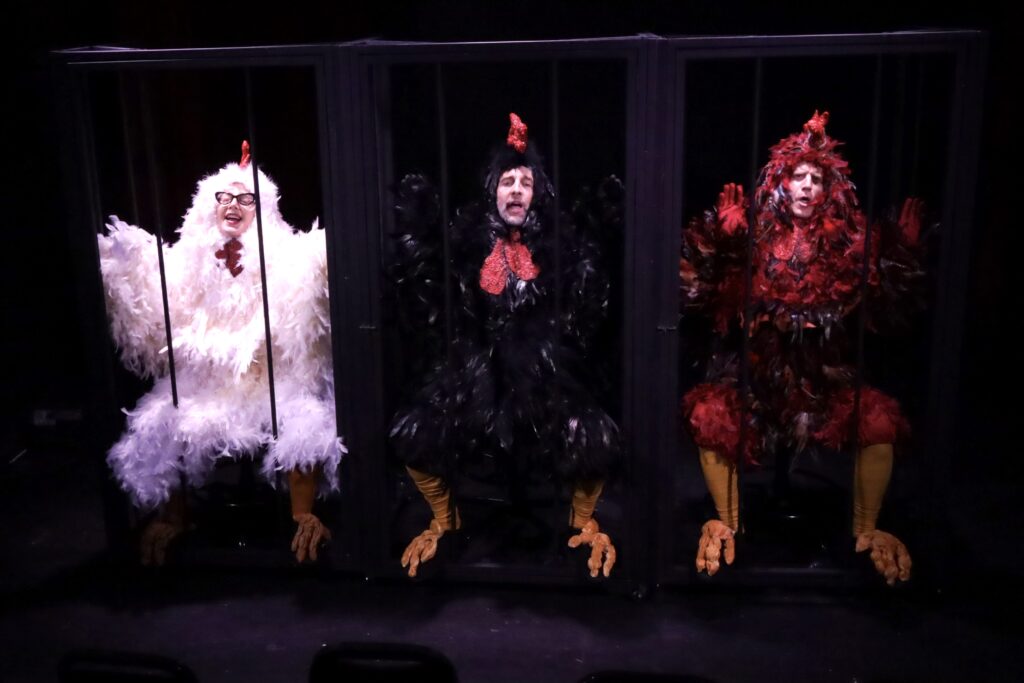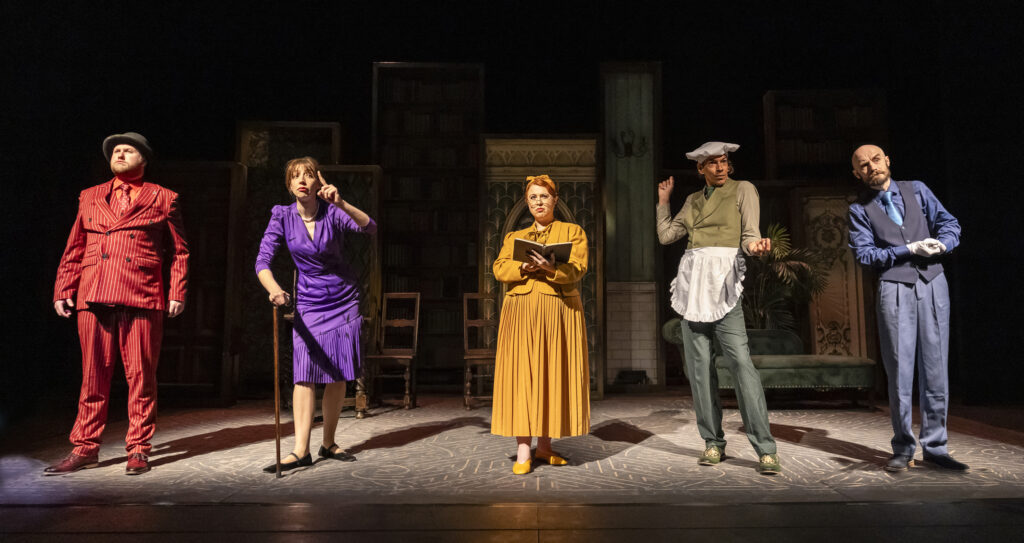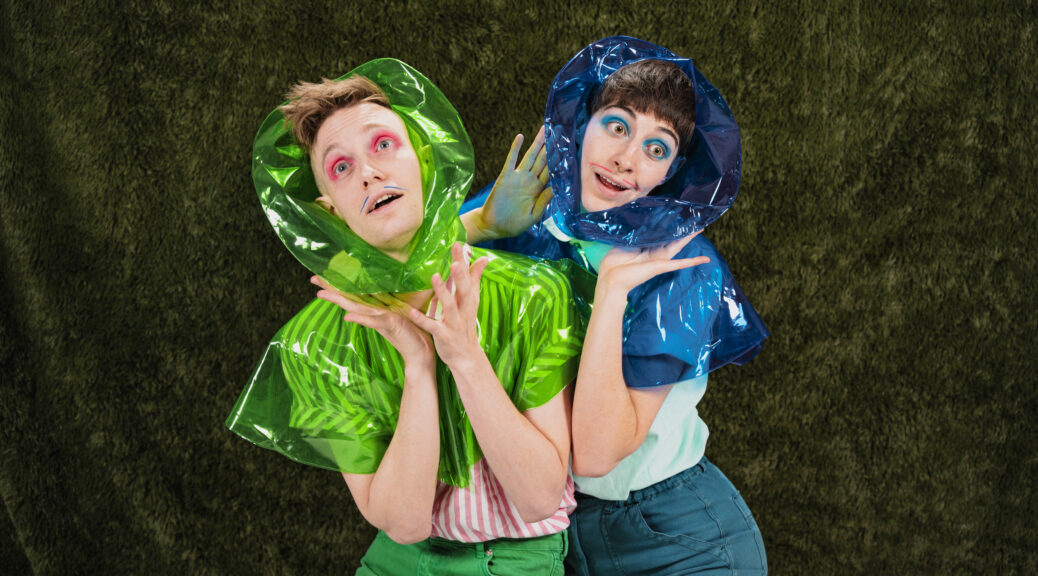
 (4 / 5)
(4 / 5)
We all know the rags-to-riches fairy-tale Cinderella: a beautiful, kind-hearted young woman, stuck scrubbing floors while her stepsister’s parade around in all their wickedness. However, with a little help from her Fairy Godmother, Cinderella is whisked off to the Royal Ball, where she promptly falls in love with the Prince. There’s just one catch- the magic expires at midnight. Cue a frantic exit, one abandoned shoe (sorry, slipper), and a Prince determined to search the entire kingdom for the foot that fits. Spoiler alert: he finds Cinderella and, of course, they live happily ever after. Throw in her bestie, Buttons, a Fairy Godmother with a wardrobe fit for a queen (I’ll let you decide which type of queen!) and a blend of fantastical sets, props and dancing villagers and you’ve got yourself a recipe for a standout Venue Cymru production!
A brilliantly written script, this panto does not disappoint in its nod to tradition with plenty of hilarious one liners, often alluding to well-known North Wales locations, lots of ‘oh no, you didn’ts’ etc., a frenzied 12 Days of Christmas complete with custard pies and, a highlight, Buttons and the Fairy Godmother discussing ‘Billy from Bala’s Bullocks’…you can imagine where this sketch has the potential to go…! The chemistry between John Evans (Buttons) and Simon Nehan (Fairy Godmother/Dame Dolly Penrhyn) is unmistakable- both consummate professionals and no stranger to Venue Cymru’s stage (in fact, Dame Dolly mentions how confusing her feelings are for Buttons as she played his mother last year!) Evans is the master of improvisation and clearly extremely comfortable in this role and Nehan excels as the Dame, with wonderful comic timing and just enough bawdy behaviour!

Another duo with a clear connection is 2025 Britain’s Got Talent finalists Hannah Roberts and Fran Cottington as wicked stepsisters Whitney and Britney Bardashian (see what they did there?!). Both local, Han & Fran are literally ‘living the dream,’ riding on the wave of their talent show success. However, these two are not to be underestimated. They have already proved they can sing and that they’re comfortable in front of the cameras and now this powerhouse pair are conquering the professional theatre world. Both seem very ‘at home’ here and bounce off each other perfectly, neither one stealing the limelight from the other. Performing a laugh-out-loud rewrite of ABBA’s Fernando (an ode to popular restaurant chain Nando’s!) along with other ABBA classics and more, continue like this and Team Han & Fran will no doubt go a long way!
Another local performer is Corrine Cherish who simply shines as Cinderella. Despite being the title character, this role can often be forgettable. However, Cherish truly puts her own stamp on the story’s heroine, and not only does she make a stunning lead, her vocals also stun- no more so than at the end of Act One- as Cinderella makes her way to the ball in her newly transformed coach, Cherish’s soaring vocals, combined with a beautifully magical piece of stagecraft (which I won’t spoil here), create a surprisingly emotional and memorable end to the first half.
This year’s ‘celebrity’ panto stars are Strictly Come Dancing’s AJ Pritchard and his brother, also a professional dancer, best known for Dancing with the Stars, Ireland, and his appearance on Love Island. Unfortunately, both give disappointing performances, often stumbling over lines, and displaying acting talent about as wooden as Cinderella’s broom! I’m not sure I’ve ever attended a production of Cinderella in which the Prince (AJ Pritchard) doesn’t sing at all and, although Curtis Pritchard as Dandini is given a few musical moments, he mimes every time which is very off-putting! I can’t help but think the production would have benefited from some more local talent rather than being reliant on ‘names’ to put bums on seats!

The cast is mostly strong, with a lively and dynamic ensemble who keep the energy up and whimsical, cartoon-like sets, clever lighting design and fabulous costumes all add to the magic. The musical numbers strike a fun balance between timeless classics and modern hits- though, like Cinderella’s night at the ball, some feel a tad rushed. All songs, however, are played live by the company’s fantastic band, led by Musical Director Shaun Critten, who even pops up for his own mini moments in the show, adding an extra sprinkle of charm!
Overall, Venue Cymru’s Cinderella is a true spectacle which could have been propelled to a five-star production with a handful of minor alterations. It was wonderful to see the theatre full on a Sunday afternoon and a pleasure to hear families thoroughly enjoying themselves in the lead up to Christmas. For a feel-good, festive experience with lots of laughs and local talent, I wouldn’t hesitate to recommend a visit to Venue Cymru this panto-season!
Cinderella.
Venue Cymru, Llandudno
Friday December 12th, 2025- Saturday January 3rd, 2026
Cinderella | Venue Cymru
CAST
AJ Pritchard
Curtis Pritchard
John Evans
Hannah Roberts
Fran Cottington
Simon Nehan
Corrine Cherish
Ella Goody
Connor Pearson
Sadie Wagstaff
Sam Woods
CREATIVE TEAM
Associate Producer Laura Taylor
Second Associate Producer Jo Longworth
Writer Tam Ryan
Director Alli Coyne
Choreographer Eddie Slattery
Musical Arranger Steve Clark
Musical Director Shaun Critten
Lighting Designer Ben Payne
Sound Designer Matt Karmios
BAND
Md/Keys Shaun Critten
Drums Michael ‘Ozzie’ Osborn
Bass Dominic Palmer
FOR CINDERELLA
Production Manager Andy Pye
Company Manager Matthew Ollerhead
Deputy Stage Manager Heather Milne
Assistant Stage Manager Mali Barratt
Wardrobe Supervisor Paula Cain
Wardrobe Assistant Imogen Duke
Dresser Alaw Broster
Production Carpenter Simon Somerset Holmes
Lighting Programmer Sophie Schmidt
Production Sound Matt Gibson
Sound No 1 Jason Jones
Dance Captain Ella Goodie



 (5 / 5)
(5 / 5)

 (3 / 5)
(3 / 5)













